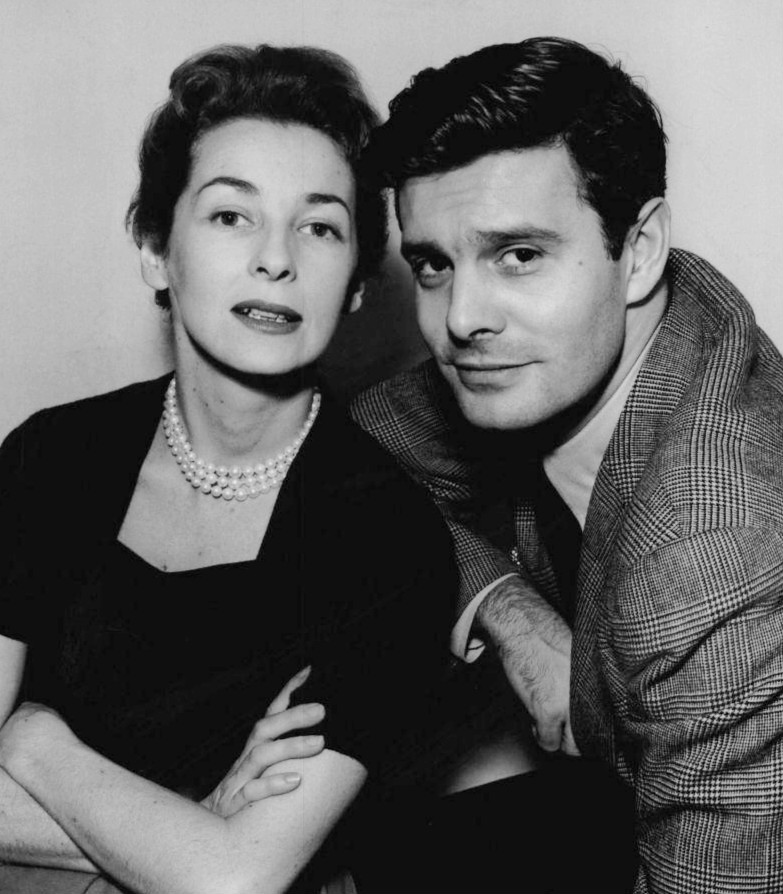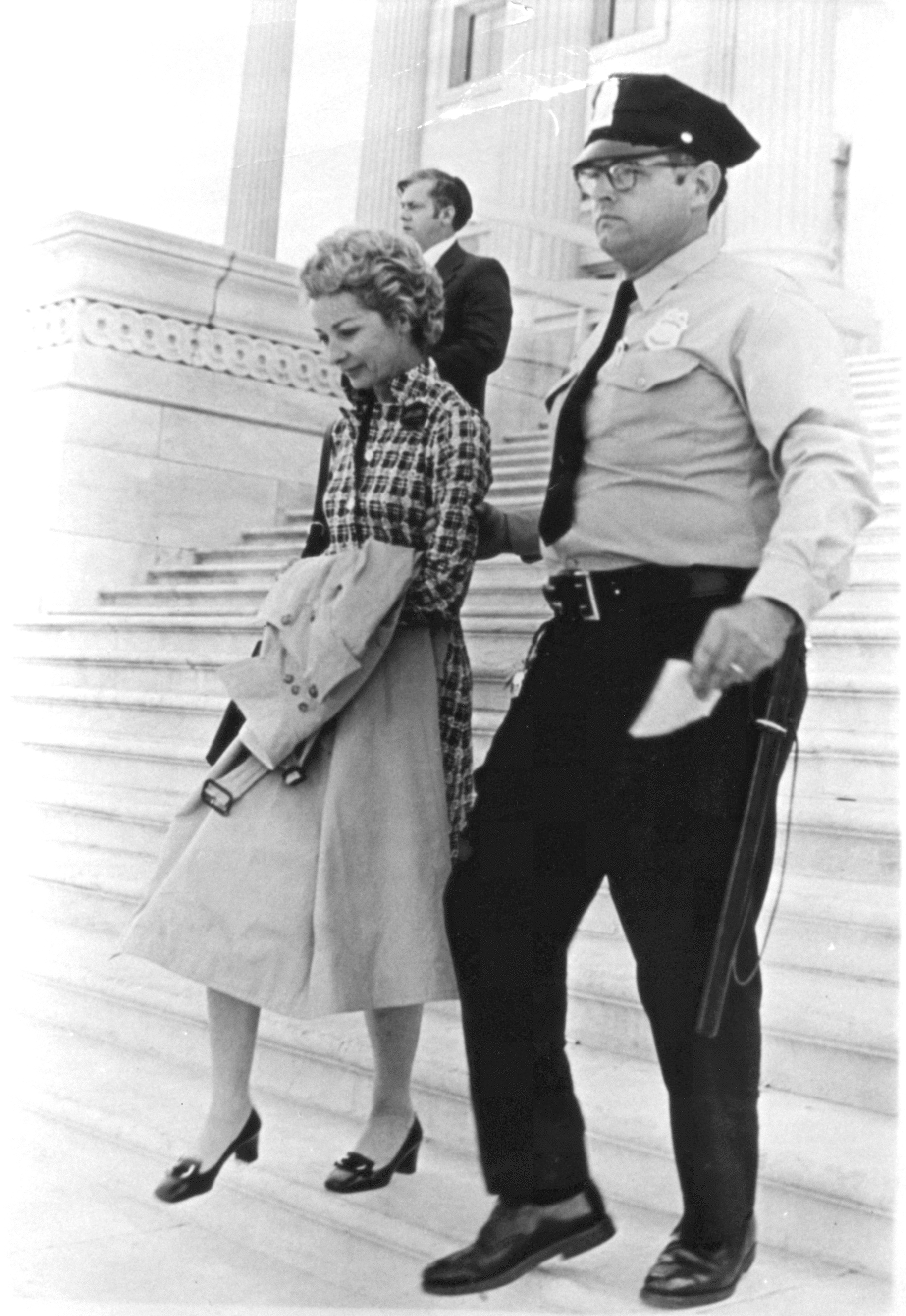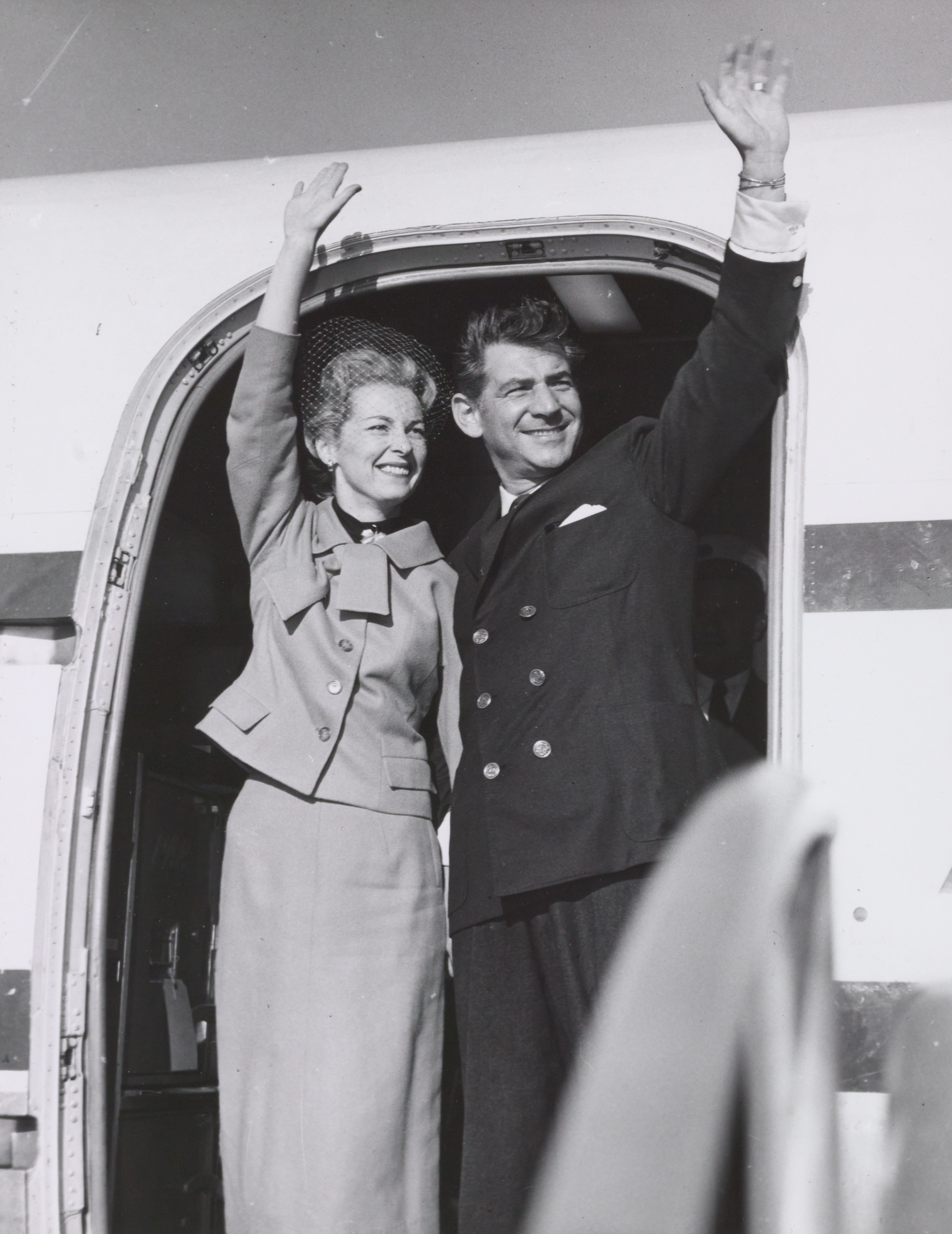1. Overview
Felicia Montealegre Bernstein (born Felicia María Cohn Montealegre; February 6, 1922 - June 16, 1978) was an American actress born in Costa Rica, known for her extensive career in theatre and television, as well as her significant contributions to social activism. She was a prominent advocate for civil liberties, a vocal participant in anti-war movements, and a supporter of human rights. Her life reflected a deep commitment to justice and artistic expression, often intertwining her public persona with her progressive social causes. Montealegre's career spanned various dramatic roles, including collaborations with symphony orchestras, notably alongside her husband, the renowned composer and conductor Leonard Bernstein. Her legacy extends beyond her artistic achievements to her enduring impact on humanitarian efforts and her principled stands against injustice.
2. Early life and education
Felicia Montealegre's early life was marked by a rich cultural heritage and a foundational education that prepared her for a career in the arts and a life of social engagement.
2.1. Birth and family
Felicia María Cohn Montealegre was born on February 6, 1922, in San José, Costa Rica. Her mother, Clemencia Cristina Montealegre Carazo, was Costa Rican, while her father, Roy Elwood Cohn, was a United States mining executive stationed in Costa Rica. She had two sisters, Nancy Alessandri and Madeline Lecaros. Her family history included prominent figures, such as Mariano Montealegre Bustamante, who served as the first vice head of state of Costa Rica and was her great-great-grandfather. Her paternal grandfather also had a Jewish background.
2.2. Childhood and education
At the age of one, Montealegre moved to Chile, where she received her early education at the French School of Nuns. After her formative years in Chile, she relocated to New York City in 1944 at the age of 21 to pursue her artistic aspirations. In New York, she took piano lessons from the acclaimed Chilean pianist Claudio Arrau, who is considered one of the greatest pianists of the 20th century. Concurrently, she began acting lessons with Herbert Berghof at the Dramatic Workshop of the New School for Social Research, continuing her studies with him at his newly founded acting school, HB Studio.
2.3. Religious background and conversion
Raised in a Catholic family, Felicia Montealegre later converted to Judaism before her marriage to Leonard Bernstein. This conversion was a significant personal decision prior to establishing her family life with Bernstein.
3. Career
Felicia Montealegre's professional career as an actress encompassed a wide range of performances across theatre, television, and dramatic works with orchestras, showcasing her versatility and talent, though she did not appear in any feature films.
3.1. Theatre and Broadway
Montealegre's theatrical career began in New York in April 1945, with her first acting appearance in the English-language premiere of Federico Garcia Lorca's If Five Years Pass at the Provincetown Playhouse. She made her Broadway debut on July 20, 1946, at the Booth Theatre as the ingenue in Ben Hecht's Swan Song. In 1950, she served as an understudy to Leora Dana in Samuel A. Taylor's The Happy Time on Broadway, which starred Eva Gabor and her then-lover, Richard Hart.

Her notable Shakespearean roles included Jessica in a 1953 production of The Merchant of Venice at New York City Center and Katharine in a 1956 production of Henry V at the Cambridge Drama Festival in Cambridge, Massachusetts. Other significant stage appearances included Margot Wendice in Dial M for Murder at the Palm Beach Playhouse in Florida in 1957, and Sally Bowles in Van Druten's I Am a Camera at the North Jersey Playhouse, where she starred alongside her lifelong friend and colleague Michael Wager.
Montealegre returned to Broadway in 1967 to portray Birdie Hubbard in Lillian Hellman's The Little Foxes, directed by family friend Mike Nichols. In 1973, she made her Metropolitan Opera debut as Andromache in Berlioz's opera Les Troyens, which marked the work's first staging in New York City. Her final Broadway appearance was in the 1976 play Poor Murderer, directed by her former acting teacher, Herbert Berghof.
3.2. Television
Montealegre had an extensive career in television, primarily starring in leading roles in weekly anthology dramas. Beginning in 1949, she appeared on programs such as Kraft Television Theatre (NBC), Studio One (CBS), Suspense (CBS), The Chevrolet Tele-Theatre (NBC), and The Philco Television Playhouse (NBC).
Her television debut was on NBC's Kraft Television Theatre on May 11, 1949, where she played Hygieia in Mary Violet Heberden's The Oath of Hippocrates, alongside actors Dean Harens and Guy Spaull. She appeared in 11 episodes of Kraft Television Theatre between 1949 and 1956, taking on various characters, including Hygieia in The Oath of Hippocrates (1949), Nora in an adaptation of Henrik Ibsen's A Doll's House (1950), Mary Cristof in Delicate Story (1951), and Emma Woodhouse in Emma (1954).
Montealegre also made her first appearance on CBS's Studio One in the psychological thriller Flowers from a Stranger, which aired on May 25, 1949, co-starring with Yul Brynner. She acted in 11 Studio One teleplays from 1949 to 1956. Her roles included Bessie in The Light That Failed (1949), Mildred Rogers in Of Human Bondage (1949), Lorna in Flowers from a Stranger (1949, 1950), Kate Croy in The Wings of the Dove (1952), Sara in Flower of Pride (1956), and Helen in This Will Do Nicely (1956). In 1949, she co-starred with Charlton Heston in Of Human Bondage, based on W. Somerset Maugham's novel, and again with Heston in 1952 in The Wings of the Dove, based on the 1902 novel by Henry James.
On October 31, 1949, Montealegre played Christine Vole in an episode of The Chevrolet Tele-Theatre titled Witness for the Prosecution, broadcast on NBC. She appeared in four episodes of the CBS series Suspense (1949-1954), including "The Yellow Scarf" (June 7, 1949), where she played housekeeper Hettie alongside Boris Karloff, and "The Tip" (1950), "Death Sabre" (1951), and "An Affair with a Ghost" (1954).
3.3. Dramatic works with orchestra
Montealegre also performed dramatic roles in classical music concerts, often collaborating with her husband. In 1957, she made her debut in this genre as the narrator in Lukas Foss's Parable of Death, based on a mystical poem by Rainer Maria Rilke, for a concert by the Syracuse Friends of Chamber Music.
She repeatedly performed the title role of Joan in Arthur Honegger's Joan of Arc at the Stake (Jeanne d'Arc au bûcherJoan of Arc at the StakeFrench). Notable performances include a 1958 concert with her husband, Leonard Bernstein, conducting the New York Philharmonic, with Leontyne Price in the role of Margaret. Bernstein specifically wrote the narration for his Symphony No. 3: Kaddish with Montealegre in mind. She narrated its American premiere with soprano Jennie Tourel and Charles Munch conducting the Boston Symphony Orchestra on January 31, 1964. She also lent her voice to a version of French composer Claude Debussy's Le martyre de Saint Sébastien, performed in English.
4. Social activism
Montealegre was deeply committed to social causes, dedicating significant efforts to civil liberties, anti-war movements, and human rights advocacy. Her activism often placed her at the forefront of progressive movements of her time.
4.1. Civil liberties and anti-war activism
In 1963, Montealegre became the first chair of the Women's Division of the New York Civil Liberties Union, where she focused on educational programs and fundraising events. She emphasized the importance of public understanding of constitutional rights, stating in 1964, "It's amazing how little even knowledgeable people know about the Constitution and what people are fighting for."

Montealegre was a staunch supporter of the anti-war grassroots campaign Another Mother for Peace, which was initiated on Mother's Day in 1967. This organization encouraged volunteers to mail postcards to President Lyndon B. Johnson and members of Congress with the powerful message: "War is not healthy for children and other living things. Talk peace." Her commitment to peace extended to direct action; two years later, she was among 100 individuals arrested during an anti-war protest in Washington, D.C..
4.2. Support for Black Panther Party and "Radical Chic"
On January 14, 1970, Montealegre hosted a fundraiser at the Bernsteins' Park Avenue apartment to support the families of the Panther 21, members of the Black Panther Party who had been jailed for nine months without trial dates or financial means to cover legal fees and support their families. The event, intended to address humanitarian concerns, quickly drew public attention.
The following day, Charlotte Curtis reported on the event in The New York Times. By June, Montealegre became a central figure in Tom Wolfe's influential New York magazine cover story, ""Radical Chic: That Party at Lenny's"", which popularized the term "radical chic". Montealegre sharply condemned the media's portrayal in a letter to The New York Times, writing that the "frivolous way in which it was reported as a 'fashionable' event is... offensive to all people who are committed to humanitarian principles of justice." In the aftermath, the Bernsteins' residence was picketed by Jewish Defense League protesters, and the family received hate mail. Years later, Leonard Bernstein's FBI file revealed that the Bureau had fabricated these letters and staged agents to incite the protests, highlighting the political motivations behind the backlash.
4.3. Criminal justice reform and human rights advocacy
Montealegre was also deeply involved in criminal justice reform. As vice-chairman of the Citizens' Inquiry on Parole and Criminal Justice, Inc., she co-authored a significant report on the New York State parole system in March 1974. This report was a collaborative effort with figures such as Coretta Scott King, Victor Marrero, and Ramsey Clark. The report critically assessed the theory and practice of the New York State Board of Parole, recommending its abolishment if a viable alternative could be found. Montealegre explained the report's objective was "to awaken the public and to tell the inmates themselves what to expect."
Her human rights advocacy extended internationally. Montealegre worked behind the scenes for Amnesty International in Chile during its period of political unrest in the 1970s. In tribute to his late wife, Leonard Bernstein established the Felicia Montealegre Bernstein Fund of Amnesty International USA. This fund was groundbreaking as the first of its kind, providing crucial organizational assistance and technological resources to support human rights activities.
5. Personal life
Felicia Montealegre's personal life was characterized by a complex and enduring marriage, a close-knit family, and diverse interests that reflected her artistic and intellectual nature.
5.1. Relationship with Leonard Bernstein

Montealegre first met composer-conductor Leonard Bernstein in 1946 at a party hosted by Claudio Arrau. After an initial engagement was broken off, she had a relationship with actor Richard Hart until his death on January 2, 1951. She and Bernstein married on September 9, 1951.
Their marriage, while loving, was complex due to Bernstein's homosexuality. His collaborators, including those on West Side Story, noted his orientation, suggesting he married to quell rumors about his private life and maintain his prominent musical career, following advice from his mentor Dimitri Mitropoulos, who emphasized the conservative nature of symphony orchestras. Felicia was aware of and accepted his sexual orientation. As Shirley Rhoades Perle, a friend of Bernstein's, once remarked, he "asked for boys sexually and girls emotionally." A letter she wrote to Bernstein, published in The Leonard Bernstein Letters (2013), confirmed her understanding of his identity and her willingness to accept him as he was. She stated that their marriage would be based on mutual respect and forgiveness rather than solely on emotion. Despite this understanding, Bernstein's extramarital affairs with young men reportedly caused marital challenges.
In 1976, their marriage faced significant strain when Bernstein left Montealegre for musicologist Tom Cothran, a decision he made as he felt he could no longer conceal his homosexuality. However, he returned to her side after she was diagnosed with lung cancer in 1977, caring for her until her death.
5.2. Children
Felicia Montealegre and Leonard Bernstein had three children:
- Jamie Bernstein (born September 8, 1952), who became an actress, director, and screenwriter.
- Alexander Bernstein (born July 7, 1955), who became an actor and music coordinator.
- Nina Bernstein (born February 28, 1962).
5.3. Personal interests and style
The Bernsteins were known for regularly hosting parties and welcoming friends into their home, creating an atmosphere of "food, generosity and merriment, word games and puzzles," as described by family friend and photographer John Jonas Gruen. Montealegre maintained close friendships with many artists and intellectuals, including Marc Blitzstein, Lillian Hellman, Jennie Tourel, Richard Avedon, Martha Gellhorn, Stephen Sondheim, Cynthia O'Neal, and Michael Wager, with whom she corresponded regularly.
Montealegre was recognized as a fashion icon, often being the first to showcase new designer looks at public events. Her appearances at New York Philharmonic season opener concerts helped make these events fashionable, inspiring new audiences to engage with classical music. In a 1958 interview with The New York Times, she remarked, "Fads can become serious. Some people may attend to show off their mink, find they enjoy the music and become devoted to the Philharmonic." Her impeccable taste and wardrobe were frequently reported in the press.
Beyond fashion, Montealegre also designed the interiors of each of the Bernsteins' family homes, collaborating with professional decorator and friend Gail Jacobs. She was also recognized by the Guild of Professional Beauticians as one of "The Ten Best Coiffured Women of 1964," alongside contemporaries like Eileen Ford, Anne Klein, and Debbie Reynolds. She famously cut hair for her friends and family, once giving pianist Glenn Gould an impromptu haircut upon their first meeting.
In her spare time, Montealegre pursued painting, studying with postwar artists Daniel Schwartz and Jane Wilson, the wife of John Gruen.
6. Death
Felicia Montealegre Bernstein died of breast cancer which had metastasized to her lungs in East Hampton, New York, on June 16, 1978, at the age of 56.
7. Legacy and popular culture
Felicia Montealegre Bernstein's life and work continue to be recognized, both through her portrayal in popular culture and the lasting impact of her social activism.
7.1. Portrayal in media
Montealegre features prominently in Tom Wolfe's influential 1970 essay "Radical Chic: That Party at Lenny's", which chronicled the controversial fundraiser she hosted for the Black Panther Party.
In 2023, Carey Mulligan portrayed Montealegre in Bradley Cooper's biographical drama film Maestro, which chronicles her relationship with Leonard Bernstein (played by Cooper). Mulligan's performance earned her a nomination for the Academy Award for Best Actress.
7.2. Commemoration and impact
The lasting influence of Montealegre's activism is commemorated through the Felicia Montealegre Bernstein Fund of Amnesty International USA, established by Leonard Bernstein in her memory. This fund was the first of its kind, providing essential organizational and technological resources to support human rights activities globally. Her contributions to civil liberties, anti-war efforts, and criminal justice reform underscore her enduring commitment to social progress and human rights.
8. Acting credits
8.1. Television
| Year | Title | Role(s) | Notes |
|---|---|---|---|
| 1949-1956 | Kraft Television Theatre | Various | 11 episodes |
| 1949-1956 | Studio One | Various | 11 episodes |
| 1949-1954 | Suspense | Various | 4 episodes |
| 1949 | The Chevrolet Tele-Theatre | Christine Vole | season 2, episode 7: "The Witness for the Prosecution" |
| The Silver Theatre | season 1, episode 6: "Patient Unknown" | ||
| 1950 | Lights Out | season 2, episode 27: "The Emerald Lavalier" | |
| Starlight Theatre | season 1, episode 20: "Forgotten Melody" | ||
| The Philco Television Playhouse | Various | 4 episodes | |
| 1951 | Lights Out | Leda | season 3, episode 29: "Leda's Portrait" |
| Lux Video Theatre | Viola Cole | season 1, episode 15: "The Purple Doorknob" | |
| 1952 | Goodyear Theatre | Empress Carlotta Amelia | season 1, episode 10: "Crown of Shadows" |
| 1953 | The Web | season 3, episode 40: "Encore" | |
| The Revlon Mirror Theater | season 1, episode 5: "The Enormous Radio" | ||
| 1954 | Goodyear Theatre | season 3, episode 7: "Moment of Panic" | |
| You Are There | season 2, episode 35: "The Death of Rasputin" | ||
| 1955 | Person to Person | Self | season 3, episode 4 |
| 1956 | The Kaiser Aluminum Hour | Ismene | season 1, episode 5: Antigone |
| 1957 | Omnibus | Self | season 6, episode 11: "Bernstein: A Musical Travelogue" |
| 1961 | Play of the Week | season 2, episode 21: "The Sound of Murder" | |
| 1966 | The Match Game | Self | season 5, episode 46 |
| 1968 | The Merv Griffin Show | Self | season 5, episode 94 |
| 1977 | Camera Three | Self | season 22, episode 29: Façade |
8.2. Theatre
| Year | Title | Role(s) | Notes |
|---|---|---|---|
| 1953 | The Merchant of Venice | Jessica | New York City Center |
| 1967 | The Little Foxes | Birdie Hubbard | Ethel Barrymore Theatre, Broadway |
| 1976 | Poor Murderer | Fourth Actress | Ethel Barrymore Theatre, Broadway |